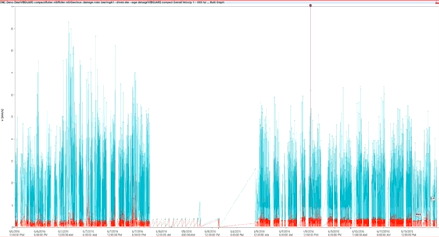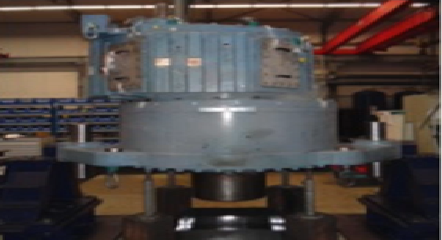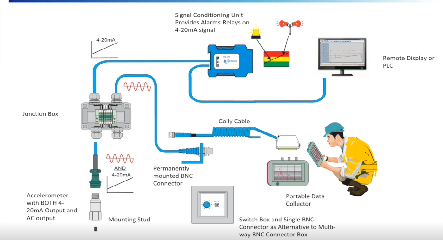Vibration monitoring is essential for predictive maintenance of rotating machinery. This is no less true in hazardous locations, and certified sensors designed for these locations are readily available. Below, we’ll focus on Intrinsically Safe sensors, which meet the requirements for hazardous locations found in chemical processing facilities, refineries, mills, and other facilities where flammable materials are processed or handled.
Classifying hazardous areas
A hazardous area is essentially a location where there’s a risk of explosion or fire. In North America, hazardous areas are classified according to the Class/Division system defined by NFPA Publication 70 and the NEC/CEC (National/Canadian Electrical Codes). The similar (but not interchangeable) Class/Zone system is used outside of North America, though it has recently been adopted there as an alternative. The classification of hazardous areas describes a) the hazardous material that may be present, b) the likelihood or region/area that it’s present, and c) the conditions that affect the chance of explosion or fire. Intrinsic Safety is most often used as a protection method where there are flammable liquids, gases, or vapors (Class I) present in ignitable concentrations under normal operating conditions (Division 1, or Zone 0/1). Sensors are also certified to a temperature class; T4 (equipment surface temperatures up to 120°C) is acceptable for a significant portion of Class I, Division 1 areas.
The Intrinsically Safe protection method
Electrical equipment deployed in a hazardous area must meet certain requirements to reduce explosion risk. There are several ways of reducing explosion risk – confining the explosion in an enclosure, isolating the equipment to prevent ingress of explosive mixtures, and limiting the energy so that the electrical equipment can’t cause ignition are just a few.
Intrinsically Safe sensors focus on controlling the ignition source by limiting the available energy and preventing, rather than containing, explosions. By design, they are incapable of developing enough energy to ignite the surrounding atmosphere. A safety barrier is placed outside the hazardous area to limit faults from outside equipment entering the hazardous area via the accelerometer cable. To learn more, watch our FIVE MINUTE FACT Safety Barrier and Intrinsically Safe Accelerometer Compatibility.
Advantages of Intrinsic Safety
Intrinsically Safe vibration monitoring systems limit the energy even under worst-case scenarios of multiple fault conditions. Other upsides include:
· Globally accepted standards
· Well-documented and consistent installation and maintenance requirements – less training, increased safety
· Compatible with retrofit applications and new technologies
· Permits the use of conventional cables
· ‘Simple apparatus’ – most accessory equipment does not need to be certified, reducing cost
To learn more about requirements for accessory equipment in hazardous areas, watch our webinar, “Vibration Measurement Chains in Hazardous Areas”.
Why monitor vibration?
Predictive maintenance in general is a great practice. It’s even better for machines in hazardous areas. Critical machines are less likely to fail at inconvenient times when you can reliably schedule repairs and downtime, which is done much more efficiently with the use of vibration data. Scheduled maintenance increases plant uptime and improves safety, since there’s less need to enter the hazardous area during normal operation and less chance of machine failure in dangerous conditions.
Rotating machines such as pumps, motors, compressors, fans, and anything with bearings are all used in hazardous areas and should all be monitored for changes in vibration levels. Dual-output sensors are also available to provide insight to temperature levels in addition to vibration readings. Intrinsically Safe vibration sensors can provide all of this information with high reliability and significant ROI, giving you more peace of mind.






